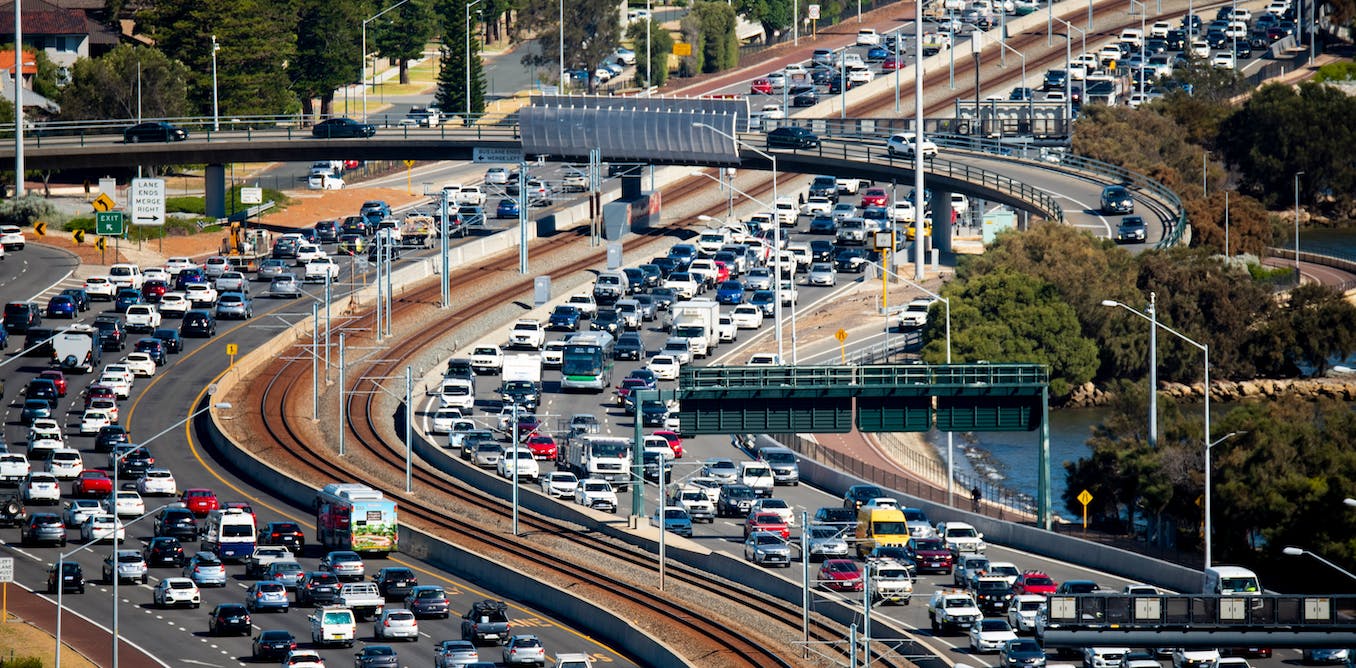Climate Change and Energy Minister Chris Bowen has announced Australia is “within striking distance” of the government’s 2030 emissions reduction target.
The good news was in the 2023 Climate Statement he tabled in parliament late last week.
Our commitment under the Paris Agreement is to reduce emissions of greenhouse gases by 43% relative to 2005 levels by 2030, and to reach net zero emissions by 2050.
Unfortunately, a closer look at the statement suggests Australia is unlikely to achieve net zero by 2050 in the absence of radical policy changes. The problem can be seen in the following charts, included in the statement.
The devil in the detail
At first sight, the picture looks encouraging. Total emissions, represented by the yellow line, have declined greatly since the peak just after 2005. The trajectory looks consistent with net zero by 2050. The red dotted line, taking account of additional measures planned by the government, but not yet committed, lowers emissions a bit further.
A closer look leads to a gloomier conclusion. Nearly all of the reduction arises from just two categories: electricity and “LULUCF”, which stands for “land use, land-use change and forestry”.
This can be seen by turning to the original source of the data. The Department of Climate Change, Energy, the Environment and Water provides a graph showing the same data, but with the different sources of emissions shown separately, rather than being stacked as they were in the previous graph.
The decline in electricity emissions reflects the rapid replacement of coal and gas-fired electricity by renewables (mainly solar power, wind and hydro, firmed by battery storage). This transition is well underway, and likely to continue.
The bad news is the transition to renewable electricity will be complete around 2035, after which there can be no further reductions.
The other main source of declining (in fact, negative) emissions is a grab bag of measures such as reductions in land clearing. There is debate over whether reductions from this source are genuine and sustainable. But the big decline in emissions from land use, land use change and forestry was over by 2015. As with electricity, there is little hope of future emissions reductions from this source.
The government will underwrite risky investments in renewables – here’s why that’s a good idea
How can we further reduce emissions?
The biggest remaining sources of emissions are transport, stationary energy (heating and burning fuel for industry), “fugitive” emissions from coal and gas production, and agriculture.
All of these are projected to remain roughly constant between now and 2035, and there is little reason to expect sharp declines after that, at least under current policies. So, on our current trajectory, we are unlikely to get much below 50% of 2005 emissions, let alone net zero, by 2050.
Looking at the sectors individually, emissions from agriculture are difficult to reduce, unless we also reduce production, particularly of meat. There have been lots of proposals to reduce emissions of methane from ruminants (mostly belches), but none has appeared practical so far. That means deeper reductions will be needed in other sectors.
COP28: 7 food and agriculture innovations needed to protect the climate and feed a rapidly growing world
In the case of transport and stationary energy, there are few technological obstacles to the achievement of drastic emissions reductions. The technology to electrify land transport, heating and most industrial processes is readily available. But there seems to be little government urgency to implement this technology.
As far as households are concerned, the crucial requirements are to replace internal combustion engine vehicles with electrics, and to replace gas for home use with electricity. Both are entirely feasible and, if we made a determined start today, the transition could be complete before 2050.
But that would require a rapid end to the purchase of new vehicles with internal combustion engines and of new gas connections for households. Neither seems likely.
The government’s National Electric Vehicles strategy released in April, included a commitment to a Fuel Efficiency Standard for new light vehicles. The draft standard was supposed to be released this year, but has not yet appeared.
Unless the standard is considerably more stringent than appears likely at present, the dominant position of polluting vehicles in new sales is likely to persist for some time.
The government rejected the recommendations of the Climate Change Authority in this area. The authority proposed a standard for heavy vehicles, and an end to polluting light vehicle sales by 2040. On this basis, there will be millions of dirty cars and trucks with internal combustion engines still on the road by 2050.
COP28: How will Australia navigate domestic climate wins and fossil fuel exports at the negotiating table?
A disturbing pattern of inaction
The same pattern of inaction applies to electrification of home energy. The Victorian government has taken the lead on banning gas connections, and the Authority recommended adopting a national approach. But Bowen declined, saying “the government does not support a national ban on gas connections to new homes”.
Even more concerning are projections for fugitive emissions from coal and gas production. These are effectively flat, implying the government expects production to continue at current levels indefinitely into the future. In turn, this implies that, as well as failing to deliver on its own 2050 net zero pledge, the government is betting the world as a whole will fail at this. Sadly, they may be right.
How could Australia actually get to net zero? Here’s how




